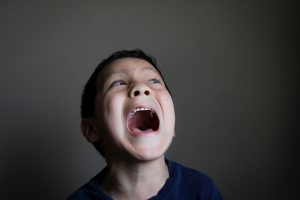4.3 Physically Abusive Adults

Abusive people have brought into their parenting the unmet needs of their own childhoods. They often have low self-esteem, excessive dependency, a failure to meet the challenges of parenting, unrealistic expectations of their children, role reversal with their children and impulsivity. Parents who abuse their adolescent children are often working out their own developmental conflicts (Crosson-Tower, 2020; Jonson-Reid & Drake, 2018; Rimer & Prager, 2016; Tufford, 2020).
Possible signs a caregiver may be physically abusive include:
- Uses harsh physical punishment with the child
- does not offer an explanation for the child’s injury or is conflicting or unconvincing
- Speaks disparagingly about the child, overt negative language used when talking about their child
- Shows a lack of self-control with low frustration tolerance; is angry, impatient
- Socially isolated, with little support or parenting relief
- Lack of knowledge about child development and parenting
- Demonstrates unrealistic expectations of the child
- Indicates the child is different, bad, cause of all their problems
- Indicates that the child is clumsy, accident-prone
- Delays seeking medical help
- Is hostile toward the child
- Poor coping skills
- Shows no empathy for the child
- Poor problem-solving skills
- Inability to control and express anger
- Addiction issues
- Mental illness
- Intimate partner violence
- Socio-economic stress
- Inability to cope and manage stress
- Was abused as a child
- Uses spanking and corporal punishment as a discipline strategy
(“Child Abuse,” n.d.; Crosson-Tower, 2020; Durrant et al., 2006; Fallon et al., 2020; Jonson-Reid & Drake, 2018; Ontario Association of Children’s Aid Societies, 2022; Public Health Agency of Canada, 2012; Rimer & Prager, 2016; Sedlak et al., 2010; Toronto Children’s Aid Society, n.d.; Tufford 2020).

Many people see child abuse as the result of pathological behaviour. However, the Canadian Incidence Study of Reported Child Abuse and Neglect (CIS-2003) found that inappropriate punishment was a factor in 75% of proven cases of physical abuse. This statistic indicates that most physical abuse occurrences result from punishment (Durrant & Ensom, 2004), where it was not the caregiver’s intention to injure the child. Those who inflict physical punishment on a child (also referred to as corporal punishment) are often angry, leading to more force being used than was intended.

